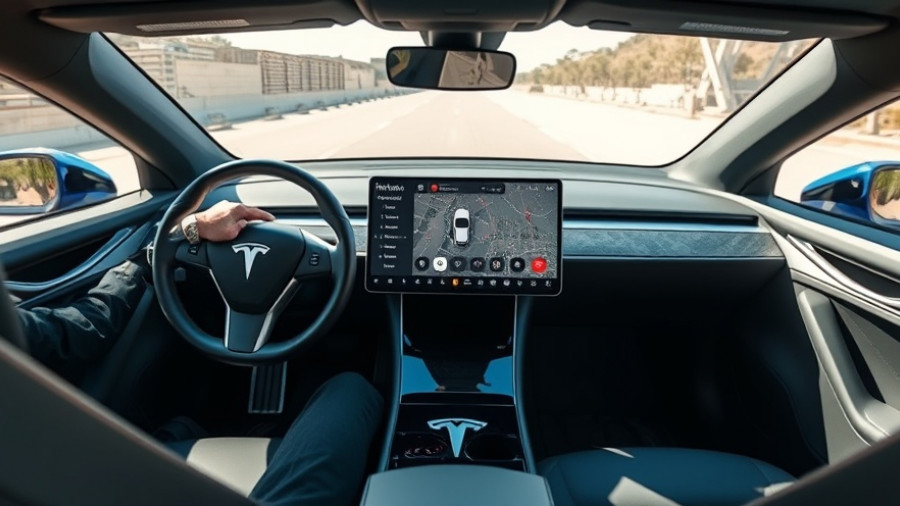
The Madness Behind Tesla's 'Mad Max' Mode
Tesla's latest update to its Full Self-Driving (FSD) feature, dubbed 'Mad Max,' has ignited a federal investigation due to concerns over its aggressive driving capabilities. This mode, designed to increase speed and dynamic maneuverability, reportedly allows Tesla vehicles to operate beyond posted speed limits, raising safety alarms among public and regulatory entities alike.
Understanding the NHTSA Investigation
The National Highway Traffic Safety Administration (NHTSA) has opened an inquiry into Tesla, focusing on 'Mad Max' as part of a broader investigation into the automaker's FSD system. The recent probe covers approximately 2.9 million vehicles and examines various safety complaints, including instances where Tesla cars have run stop signs, crossed into oncoming traffic, and even traveled through red lights.
This marks the latest chapter in an ongoing scrutiny of Tesla's FSD technology, which has been under investigation for nearly a year, following numerous accidents linked to its operation. NHTSA's concern is compounded by reports involving 14 serious crashes and 23 injuries attributed to FSD incidents.
The Speed vs. Safety Dilemma
Critics argue that Tesla is prioritizing performance and customer satisfaction over safety standards. The 'Mad Max' driving mode is marketed as a feature for those needing to reach their destinations quickly, yet many believe this compromises the essential responsibility drivers hold for adhering to traffic laws. With Tesla asserting that it doesn't offer true self-driving technology—rather, it requires constant driver supervision—the question remains: Are users fully aware of their role in these scenarios?
Expert Opinions on the Risks
Industry experts are sounding alarms over Tesla's approach to advancing automotive technology. Brett Schreiber, a lawyer involved in a wrongful death suit against Tesla, critiques the company's programming that encourages speeds beyond safe limits, describing it as a reckless move that puts all road users at risk. This expands the conversation around autonomous driving technologies and the ethical considerations that come with them.
Public Reaction and Community Concerns
The response from the public has been largely cautionary. On social media, customers express divided opinions—while some praise the exhilarating drive that 'Mad Max' offers, others voice skepticism regarding safety measures. These reactions highlight a growing anxiety over autonomous vehicle technologies, especially in densely populated urban areas like Kansas City, where the implications of high-speed maneuvers could be dire.
Future Implications of Autonomous Driving Technology
Moving forward, the regulatory landscape will likely shift in response to these concerns. The outcome of the NHTSA investigation could lead to stricter regulations governing how companies like Tesla innovate their driver-assistance technologies. Furthermore, this incident could also influence public sentiment towards not just Tesla, but the entire sector of self-driving technology.
Engaging with Emerging Automotive Technologies
For Kansas City’s local businesses and residents, the growing prevalence of advanced automotive technologies like Tesla’s FSD means more than just potential safety risks. It suggests new opportunities for innovation across various industries, including urban planning, insurance, and transportation services. By staying informed about these trends, local businesses can better adapt strategies to meet the evolving landscape.
In light of technological advancements, Kansas City's community can better understand how these innovations not only impact the way we travel but also shape the future of local commerce and public safety. Now is the time to engage with these changes thoughtfully. Have a story to share or want to contact us for more details? Drop us an email at team@kansascitythrive.com.
 Add Row
Add Row  Add
Add 





Write A Comment